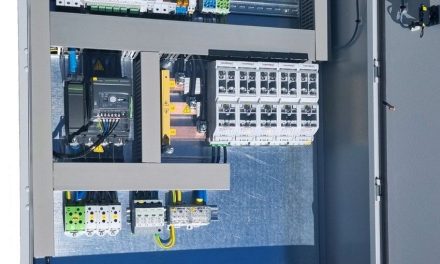 Although it is feasible that PVC cables will perform effectively in modern buildings, there are some instances where low smoke halogen-free (LSHF) cables would be more appropriate. Prysmian product manager Simon Hopkins explains
Although it is feasible that PVC cables will perform effectively in modern buildings, there are some instances where low smoke halogen-free (LSHF) cables would be more appropriate. Prysmian product manager Simon Hopkins explains
Regulations dictate that all aspects of today’s modern buildings have to be as safe as possible. Where cables are concerned, the built environment for power and control applications has been using PVC cables for decades. Quality PVC cables, installed correctly, will be able to do the job. However, if fire presents a hazard to occupants then a low smoke halogen-free (LSHF) cable could be used instead.
It is well known that the primary danger in the event of a fire is not the fire itself but the smoke and gas produced. Therefore, it is vital that the materials and products that are installed contribute as little smoke and gas when burnt as possible.
 Part B of the Building Regulations pays particular attention to this issue. It states ‘The primary danger associated with fire in its early stages is not flame but smoke and noxious gases produced by the fire. […] Measures designed to provide safe means of escape must therefore provide appropriate arrangements to limit rapid spread to smoke and fumes.’
Part B of the Building Regulations pays particular attention to this issue. It states ‘The primary danger associated with fire in its early stages is not flame but smoke and noxious gases produced by the fire. […] Measures designed to provide safe means of escape must therefore provide appropriate arrangements to limit rapid spread to smoke and fumes.’
Issues with PVC
It’s well known that commonly used standard PVC cables react extremely badly when alight in the event of fire. The main problem is that they give off toxic hydrogen chloride gas which is both corrosive and harmful to people.
If hydrogen chloride acid gas comes into contact with skin or eyes it will cause extreme irritation. Should it be inhaled, choking and vomiting will occur. If either happens to a person evacuating a building the consequences can be severe.
When PVC cables burn they give off thick black smoke. This obviously creates a major problem as it can obscure escape routes and signage, restricting safe evacuation of a building and increasing panic.
Furthermore, in a fire PVC cables can ignite and spread flame easily, making the fire worse. When this happens, unprotected cables can enable fire to follow their route throughout a building, acting as a pathway for the flames. This can ultimately accelerate a building’s destruction.
Equipment can also be damaged when PVC cables burn. The acidic hydrogen chloride gas has the potential to work its way into equipment and cause electrical failure. This is especially relevant when you consider the amount of electrical technology in modern buildings and the expense required to repair it.
Solutions
Advances have been made in cabling technology which mean that these scenarios can be avoided. However, care still needs to be taken as installation of incorrect cable could be disastrous should a fire occur.
Modified PVC cables exist which can be confused with low smoke halogen-free cables when in fact they offer vastly different reactions in a fire.
PVC cables can emit 28% hydrogen chloride gas when burnt and a modified PVC cable not much less. Compare that with a genuine low smoke halogen-free cable, which should emit less than 0.5%, and the difference is clear.
Genuine low smoke halogen-free cables should self extinguish when the source of flame is removed. They will not set light easily due to good resistance to ignition, release small quantities of white smoke, no halogen acid gasses and reduce the spread of flame.
A true low smoke halogen-free cable has to adhere to a series of stringent tests. ‘Low smoke’ has to adhere to the BS EN 61034-2 smoke density test, also known as the three metre cube test. One metre samples of cable are burnt and must achieve in excess of 60% light visibility through the smoke. The ‘zero halogen’ test, in accordance with BS EN 50267-2-1, must emit less than 0.5% halogen acid when the sample cable is burnt.
Any cable that does not meet these criteria cannot be classed as low smoke halogen-free. It’s therefore critical that the correct choice is made, and these simple pointers will help:
- Never place an over reliance on acronyms alone as this opens up the possibility of buying a product without the performance you expect and one that could place lives in danger if installed.
- Always be certain that the cable bought complies with the relevant British Standard.
- If you are unsure of the manufacturer’s reputation, check for approval by third party assessors such as LPCB or BASEC.
- If no BS product standard exists, look out for compliance with the low smoke, halogen-free and flame retardant BS test standards and requirements described earlier, as a minimum.
- Be sure to purchase product from a reputable manufacturer and brand.
Prysmian Cables & Systems
T: 0238 029 5029


